ISSN ONLINE(2319-8753)PRINT(2347-6710)
ISSN ONLINE(2319-8753)PRINT(2347-6710)
A.S. Uma maheswari1, Mrs. S. Pushpalatha2
|
| Related article at Pubmed, Scholar Google |
Visit for more related articles at International Journal of Innovative Research in Science, Engineering and Technology
Wireless sensor networks (WSNs) are composed of number of sensor nodes in order to detect and transmit Information from its surrounding environment. The sensor nodes have limited computation capability, limited power and small memory size. In these networks, sensor nodes are dependent on low power batteries to provide their energy. As energy is a challenging issue in these networks, clustering models are used to overcome this problem. Genetic algorithms is used to select the cluster heads of networks. We consider the Routing is primary parameter for improving the life time of network. We propose Advance Hybrid Multihop Routing Network (AHYMN) approaches for implementation process. Selection of Cluster Head is based on Energy level in sensor node. We implemented the HYMN approaches with Genetic algorithm for aggregation the data in sensor network.
Keywords |
| genetic algorithm, clustering, wireless sensor network, AHYMN |
INTRODUCTION |
| Wireless sensor networks are a new generation of recent networks with computational, energy and memory limitation [1].The wireless sensor network includes hundreds or thousands of sensors that usually are scattered in an inaccessible environment. The main duty of these sensors is to collect information from surrounding environment and send it to base station [2-20].Each sensor node is composed of sensor, memory, computational and wireless communication unit with a limited board. Wireless sensor networks are used in army, hygiene, education, industry, agriculture and etc. [3-20]. In these networks, sensor nodes are dependent on low power batteries to provide their energy. Because these networks are used in dangerous and inaccessible environments, it is hard or even impossible to charge or change their energy source. Therefore, one of the main challenges of these wireless sensor networks is the sensors' low energy [4- 21]. These networks efficiency depends on the lifetime of sensor nodes and network coverage. Therefore, it's important to optimize energy consumption and manage the consumption power of sensor nodes. Most of energy consumption in these networks is due to information transference inside the network .clustering is one of the common solutions to decrease the number of network's internal transference [5]. Fig. 1 shows clustering in wireless sensor network. |
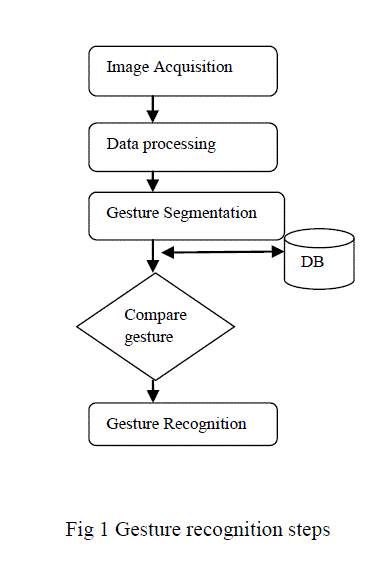 |
| In clustering sensor nodes are divided into some clusters and one node is selected as cluster head in each cluster. Cluster heads receive data from other sensor nodes and send them to base station. Selecting a suitable cluster head decreases energy consumption to a great extent and as a result increases networks' lifetime [1, 2, 21]. In recent years, due attention has been paid to powerful methods such as: fuzzy logic, genetic algorithm and neural networks [6, 7, 8, 9]. |
| In LEACH protocol [10], cluster heads are chosen first and then the members of each cluster head are determined. Cluster members send the received data to cluster head according to TDMA scheduler. Cluster head combines the received data and sends it to base station. As this algorithm just uses local information, the number of cluster heads in each round is not fixed and it may be less or more than the optimized amount in one round. Also, each node should produce and compute a random number and a threshold level in every round. ECS algorithm has improved LEACH method by changing probability. In probability function, energy parameter has been considered to choose cluster heads. Also reduction in search space has increased clustering speed [11]. In [13], in order to choose cluster heads, a two level fuzzy method is used that includes local level and global level. |
| In local level, node”s capability for being cluster head has been evaluated based on two parameters: energy and the number of neighbors. In global level three parameters have been considered: Centrality, closeness to base station and the distance between cluster heads. The HEED protocol [13] is a distributed cluster based protocol that periodically selects cluster heads according to a hybrid of the node residual energy and a secondary parameter, such as node proximity to its neighbors or node degree. HEED favors nodes with high residual energy to become cluster heads and periodically executes re-clustering to achieve l oad balancing. |
| The nodes that have been cluster heads will have a low probability of becoming cluster heads again, thus ensuring that all the nodes will carry the role of being a cluster head equally. HEED uses node degree as a fitness function if the requirement is to distribute the load among the cluster heads, the inverse of the node degree if the requirement is to create a dense cluster, or the mean of the minimum power levels required by all the nodes within the node”s transmission range to reflect the communication cost within a cluster. As a variation of HEED, time delay based clustering (TDC) is introduced in [14]. In TDC, all nodes compete to be CH until they hears ADV message, and then withdraw from the election process and subscribe to one of the elected cluster heads. As with HEED the announcement message is delayed, but with a slightly different delay mechanism. In HEED, the nodes are delayed by a simple iterations mechanism as discussed above. In TDC, three time delay schemes are studied: fully randomized, fixed slope, and steeping slope. |
RELATED WORKS |
| In these networks, sensor nodes are dependent on low power batteries to provide their energy. As energy is a challenging issue in these networks, clustering models are used to overcome this problem. In this paper[13], fuzzy logic and chaotic based genetic algorithms are combined to extend the lifetime of sensor nodes. In other words, fuzzy logic is proposed based on three variables - energy, density and centrality- to introduce the best nodes to base station as cluster head candidate. Then, the number and place of cluster heads are determined in base station by using genetic algorithm based on chaotic. Our Simulation results in the NS-2 show the longer network lifetime of the proposed algorithm than the LEACH, DEEC, SEDEEC and GFS protocols. |
| This study proposes[14], a genetic algorithmbased (GA-based) adaptive clustering protocol with an optimal probability prediction to achieve good performance in terms of lifetime of network in wireless sensor networks. The proposed GA-based protocol is based on LEACH, called LEACH-GA herein, which basically has set-up and steady-state phases for each round in the protocol and an additional preparation phase before the beginning of the first round. In the period of preparation phase, all nodes initially perform cluster head selection process and then send their messages with statuses of being a candidate cluster head or not, node IDs, and geographical positions to the base station. |
| As the base station received the messages from all nodes, it then searches for an optimal probability of nodes being cluster heads via a genetic algorithm by minimizing the total energy consumption required for completing one round in the sensor field. Thereafter, the base station broadcasts an advertisement message with the optimal value of probability to the all nodes in order to form clusters in the following set-up phase. The preparation phase is performed only once before the set-up phase of t he first round. |
| The processes of following set-up and steady-state phases in every round are the same as LEACH. Simulation results show that the proposed geneticalgorithm- based adaptive clustering protocol effectively produces optimal energy consumption for the wireless sensor networks, and resulting in an extension of lifetime for the network. |
| we have to concentrate on implementation of Weighted Clustering Algorithm[15], with the help of Genetic Algorithm (GA).Here we have developed new algorithm for the implementation of GA-based approach with the help of Weighted Clustering Algorithm (WCA) . Cluster-Head chosen is a important thing for clustering in ad-hoc networks. |
| So, we have shown the optimization technique for the minimization of Cluster-Heads(CH) based on some parameter such as degree-difference , Battery power (Pv), degree of mobility, and sum of the distances of a node in ad-hoc networks. |
| Cluster-Heads selection of ad-hoc networks is an important thing for clustering. Here, we have discussed the performance comparison between deterministic approach and GA-based approach. In this performance comparison, we have seen that GA does not always give the good result compare to deterministic WCA algorithm. Here we have seen connectivity (connectivity can be measured by the probability that a node is reachable to any other node.) is better than the deterministic WCA algorithm. |
| Large scale sensor networks[16], can be efficiently managed by dividing them into several clusters. With the help of cluster heads, each cluster communicates using some routing schedule. It is essential to rotate the role of cluster heads in a cluster to distribute energy consumption if we do not have dedicated high energy cluster heads. Usually routing and cluster head selection for such networks have been separately solved. |
| If cluster heads are selected with the consideration of routing and routing schedule is prepared with the consideration of selected cluster heads, it can help each other. We have proposed an integrated approach of cluster head selection and routing in two tier wireless sensor network (WSN) using Genetic Algorithm based cluster head selection with A-Star algorithm based routing method to extend life of WSN. This approach can lead to significant improvements in the network lifetime over other techniques. |
| Reference scenarios of the present research are clusters of cooperating wireless nodes, implementing random linear network coding to enhance the throughput performance of file downloading and information spreading services. In particular, a sub-set of cluster nodes will access, through their cellular link, parts of a file to be exchanged among all cluster members. The paper[17] focus is on the ”source election”issue. The novelty of the research lies in the main problem constraints, which make it far different from (and more exacting than) traditional cluster head election problems: the source number can cover the whole range of nodes and all the nodes must be considered data destinations. |
| We propose a source election algorithm, only based on the knowledge of the number of nodes, which is fast in converging to either the optimal or, alternatively, a satisfactory sub-optimal solution. In so doing, we exploit a performing genetic algorithm. Its observed behaviour makes us confident that the followed approach can be the winning one in conditions of null/limited awareness of node position and type of relevant available cellular links. |
THE PROPOSED ALGORITHM |
| In our propose idea is mentioned to increase the lifetime of wireless sensor network and combination of various algorithms are used to achieve our purposes, therefore, the Existing network is examined through fuzzy logic and chaotic based genetic algorithms from these aspects: |
| • The lifetime of network. |
| • The selection of cluster head in each round. |
| • The number of dead sensors after each round. |
| In this section, the hypotheses, the problem and the suggested algorithm are explained. The paper”s hypotheses are: |
| ïÃâ¬Ã Sensors are fixed in their place. |
| • In any round, each sensor can just send or receive data. |
| • Sensing the environment and preparing the data of each sensor node in order to send it, is done independently. |
| • Each node sends its position and remaining energy to its cluster head in the form of control packets. |
| • Base station has enough knowledge about the position of network nodes. |
| Each node is equipped to a GPS system and finds |
| • its place and geographical position. Heinzelman„s energy model [10] is used for sensor network. According to the radio energy dissipation model illustrated in Fig. 2, Consumed energy to send a message with k bits length in d distance is computed through the Eq. (1). |
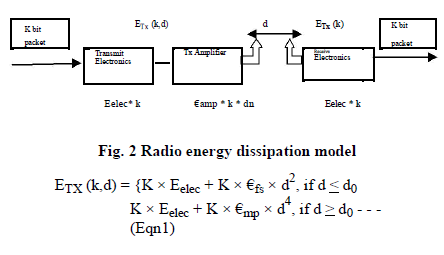 |
| Where Eelec the energy dissipated per bit to run the transmitter or the receiver circuit, fs and mp depend on the transmitter amplifier model we use, and d the distance between the sender and the receiver. By equating the two expressions at d d0 , we have |
| D0= √ €fs/ €mp - - - - - - (Eqn2) |
| Each node”s consumed energy to receive a k bit message is computed through the Eq. (3). |
| E TR = K × Eelec - - - - - - - - - - (Eqn3) |
| The distance between the two nodes that is shown with d variable is computed through the Eq. (4). |
| D = √ (XA – XB )2 + (YA – YB )2 - - (Eqn4) |
| In Eq. (4), (X A,YB ) is the position of node A in the network and (X B ,YB ) is the position of node B in the network. Consequently, Euclid distance between two nodes has a square relation with the sent energy. In the proposed method, the same as LEACH algorithm, the period of network”s activity is divided into some rounds and each round includes two phases: setup phase and steady state phase. |
| We propose Hybrid Multi-hop routing (HYMN) algorithm, which is a hybrid of the two contemporary multi-hop routing algorithm architectures, namely, flat multihop routing that utilizes efficient transmission distances, and hierarchical multi-hop routing algorithms that capitalizes on data aggregation. We are also doing power consumption using this proposed approach. |
| AHYMN - [Advanced HYMN] which is more efficient method for improving the life time of the network, where it dont bother about the distance and the number of nodes. It will do transferring the data by clustering and making cluster head in region wise. Also it will elect active, alive, energetic, closer, trusted nodes and transfer the data with data aggregation in cluster heads or in common nodes. |
IMPLEMENTATION |
| The proposed approach in this paper says that we can improve the network lifetime and the throughput of the network by reducing the time, power, and energy value of the nodes. These things will be happening by interconnecting Flat multi-hop routing algorithms, Hierarchical multi-hop routing algorithms. |
| Flat multi-hop routing algorithms aim to select paths that minimize the total power consumption used for sending data to sink node. Each node is able to establish communication with sensor nodes that lie within its maximum transmission range, and the individual link utilization differs depending on which routing algorithm is applied. For example, the authors in have proposed algorithms aiming to minimize the total power consumption while routing data from individual sensor nodes to the sink node. According to, the following equations quantify link costs between each pair of nodes. |
 |
| Here, the energy cost of transmitting a single unit of data from node i to node j, linkcost(i, j), is attributed to two components, cost on the transmitting node es(i) and the cost on the receiving node er(j). Also, es(i) is proportional to the displacement, di,j , between the transmitting node i and receiving node j. φ is the path loss exponent dependent on the wireless fading environment, its value is usually from 2 to 4, and it is 2 for short distances and 4 for long distances. |
Hybrid Multi-hop Routing |
| Although flat multi-hop routing algorithms enable routing of data in a fashion that minimizes the power consumption of the WSN, they fail to exploit the data aggregation opportunities by virtue of data collected from the WSN. In many WSN applications with the relatively high node density, the data collected by individual nodes are highly redundant, thus making data aggregation a very attractive scheme in WSNs. Hierarchical multi-hop routing algorithms aim to capitalize on the highly correlated nature of WSN”s collected data. We describe the operation of the most notable example of hierarchical multi-hop routing algorithms, dubbed Low-Energy Adaptive Clustering Hierarchy (LEACH), for illustrative purposes. In LEACH, nodes are organized in a two-level hierarchy, where their roles differ according to which level they belong to. That is, a node can be a Cluster Head (CH) or a Cluster Member (CM), and these roles are changeable in a unit of time referred to as a round. |
Advanced Hybrid Multi-hop Routing protocol |
| This protocols is interconnecting the Flat multi-hop and hybrid multi-hop. Where in this approach the next cluster head is search and found in the same range of height in the plane. In the flat multi-hop the source to destination the distance is fixed and the time is more. In the hybrid multi-hop finding the cluster head in zig-zag manner and the distance is unknown and time is also unknown. So when we combine both approaches the time, distance are known and the searching is happening in a certain height and certain range, so we are saving the energy and power consumption. Hence we are saving the life time of the network. |
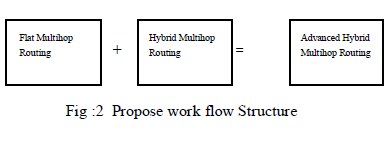 |
Flat multi-hop routing algorithms |
| Fig. 2 (a) shows an example of how flat multi-hop routing is used to send data. In the figure, an arrow”s thickness is proportional to the amount of data being sent over the corresponding link. Each sensor node has the ability to communicate over a bounded area with other sensor nodes. Link utilization differs greatly among different algorithms. For example, algorithms proposed in [2], [3] have been designed to minimize the total ower consumption of the network as the objective; in this kind of algorithms, the cost of using a communication channel is defined by the following equations. |
| Here, linkcost(i, j) is defined as the amount of energy consumed for sending a unit of data from node i to j. es(i) is the |
Fitness function: |
| Network „s current energy in k-th round is shown with EK Network. Fitness function is computed through equation that should become minimum. |
Reproduction operator: |
| Reproduction is usually the first operator applied on population. The reproduction operator selects at random a pair of two individual strings for mating. |
Cross over operator: |
| Cross over is a recombination operator.A cross-site is selected at random along the string length and t he position values are swapped between two strings. |
Mutation operator: |
| After cross over, the strings are subjected to mutation. Mutation of a bit involves flipping it, changing 0 to 1 and vice versa with a small mutation probability.After mutation, a bit that was “0” changes to “1”. It”s possible that a regular node becomes cluster head and a cluster head becomes a regular node. |
| After cross over operator, mutation happens in a way that a mutation may be created in a bit of one or some chromosomes. Finally, after crossover and mutation, base station selects the chromosome which has the networks least energy difference in proportion to the previous round and introduces the available nodes to network as cluster head and other nodes join to the nearest cluster head. |
| Cluster head selection based on energy, density and centrality using GA. |
| The following algorithm shows the stages of the proposed algorithm: |
| Step-1: Initial network. |
| Step-2:Each node sends the position of itself in the network t o its neighbors. |
| Step-3:In BS using genetic algorithm based on energy, density and centrality, cluster heads are determined. |
| Step-4: Cluster heads are introduced to all nodes in network. |
| Step-5: Each sensor node will join to the nearest CH. |
| Step-6: Each sensor node transmit data to the CH with a multiple-hop transmission. |
| Step-7: After all data has been received, aggregate all data”s of CHs using HYMN then transmit it to the BS through single hop transmission. |
SIMULATION ANALYSIS |
| In order to verify the correctness and effectiveness of our mechanism, we simulated the CH selection based on GA using AHYMN approaches on network simulator 2 and collected the results. We implemented Advanced Hybrid Multihop routing network on ns2 for build and maintain t he lifetime of network. |
| NAM editor used to show the animated schema of the CH selection based on GA and AHYMN performances. Furthermore we have used X-graph to graphically represent the cluster packet delivery ratio. From the result cluster head selection based on GA using AHYMN handling the Qos of the network. |
| The following quantitative performance metrics have taken in this study |
| Delivery rate: This metric measures the number of Packets successfully delivered during the simulation. |
RESULTS AND DISCUSSION |
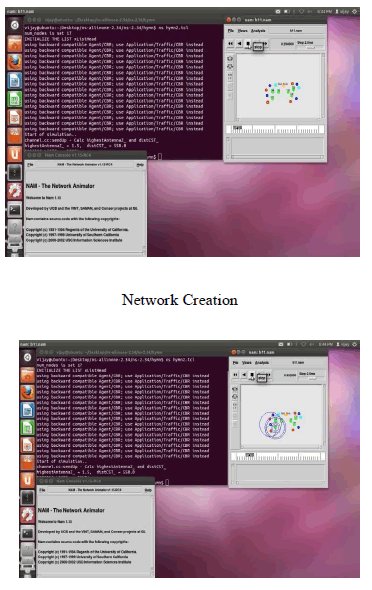 |
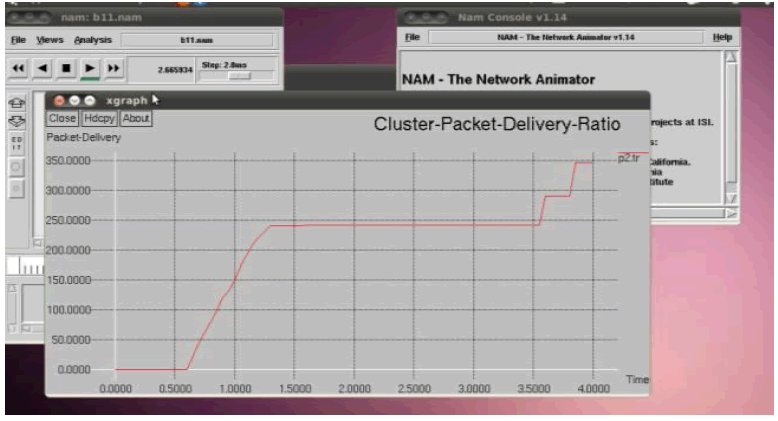 |
| Performance analysis of static cluster head based hymn implementation. Analyze the parameter like delivery ratio with time in static cluster head selection. |
CONCLUSION |
| A new method which is based on AHYMN approaches and genetic algorithm is represented to choose a cluster head in WSNs in dynamically. Therefore, it is quicker and also more accurate to detect the node with higher energy and to select the cluster head. Moreover, this network has used nodes with heterogeneous characteristics. Some of the advantageous of heterogeneous nodes are: the long lifetime of networks, increase in network”s reliability and decrease in data transference delay. |
References |
|